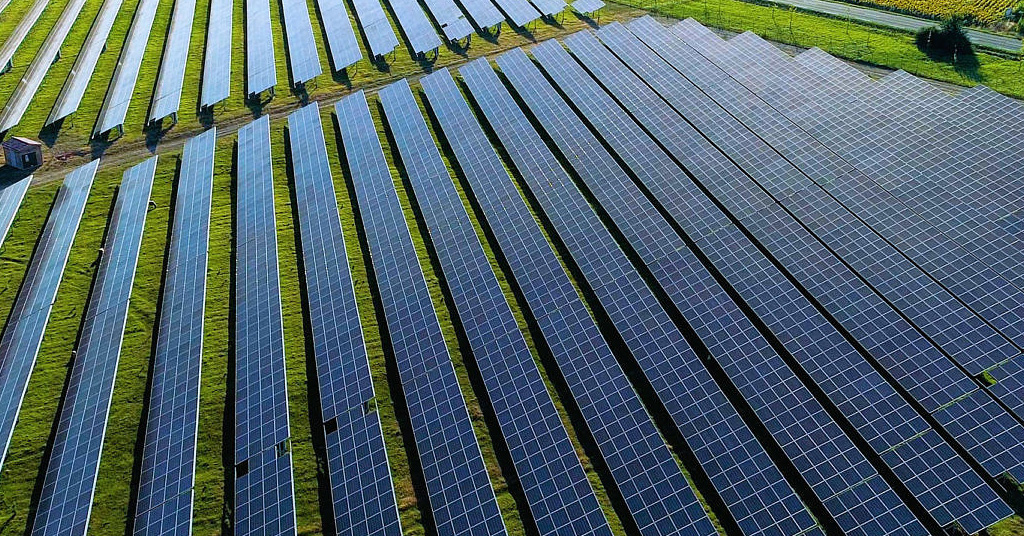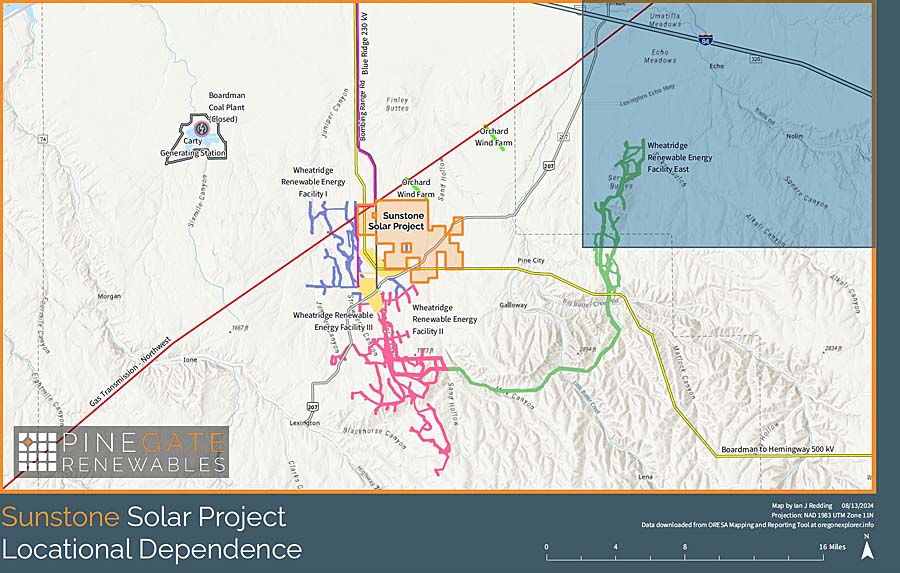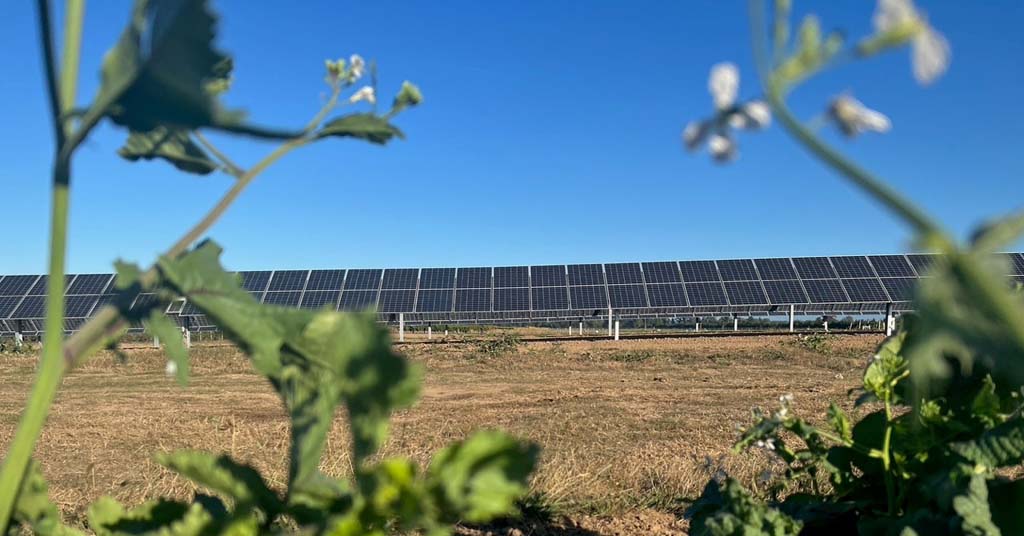The Sunstone Solar Project will cover more than 14 square miles and feature almost 4 million solar panels

Lightening the load: Not yet built, the coming Sunstone Solar Project is approved to include up to 7,200 MW hours of battery storage capacity, six substations and up to 9.5 miles of 230-kilovolt (kV) overhead transmission lines. File photo: Farm and Energy Initiative
By Kendra Chamberlain. December 26, 2024. Utility developer Pine Gate Renewables received approval in November from the State of Oregon’s Energy Facility Siting Council to construct what it says will be the nation’s largest solar farm.
The North Carolina-based company projects its new Sunstone Solar Project will feature about 4 million solar panels and produce 1.2 GW of power, enough to power about 800,000 homes or 10 very large data centers annually.
The facility will be constructed on a strip of land previously used for dryland wheat farming near the Columbia River in Morrow County, about 185 miles east of Portland, next to the Boardman Bombing Range, used by the United States Navy.
The enormous installation will be built in six phases of 200 megawatts each. Construction is planned to begin in 2026 and will take at least 10 years to complete.
The company said Sunstone Solar will interconnect with Bonneville Power Administration distribution and that it is in talks with local utilities about purchasing the power.
Morrow County is quickly becoming a clean energy hub in eastern Oregon, and the land selected for the site is considered a sweet spot for solar development.
The Sunstone Solar site is approved to take up 9,442 acres (14.75 square miles) of private land zoned for agriculture. According to The Oregonian, a third of the land comes with water rights.
Project surveys reportedly found no conflicts with wildlife or habitat, and the project thus far has faced no organized opposition from locals.
The State of Oregon restricts solar development on prime farmland, but the Sunstone Solar Project was granted an exception due to economic benefits it is expected to provide.
Local impact
Logan Stephens, vice president of project development for Pine Gate Renewables, told Columbia Insight in an email that the company reached out to several Tribes about the project including the Confederated Tribes of the Umatilla Indian Reservation (CTUIR).
“Pine Gate Renewables and the CTUIR signed an agreement to mitigate any adverse effects of the project on historic property of religious and cultural significance to the CTUIR,” wrote Stephens. “The CTUIR provided a letter to the [Oregon Department of Energy] stating that its concerns had been mitigated and that it has no further concerns with the project.”
The company will pay more than a thousand dollars per acre of agricultural land that’s being converted into an agricultural mitigation fund administered by Morrow County.

The proposed Sunstone Solar Project will be located about 185 miles east of Portland International Airport. Map: Pine Gate Renewables
“Early on in our engagement efforts, impacts related to the conversion of cultivated land to solar was identified as a key concern for several stakeholders,” wrote Stephens. “The idea to create an agricultural mitigation fund to address these impacts emerged collaboratively through our engagement efforts with local [and] state officials and dryland wheat farming interest groups.”
He added that the money will “more than offset the negative adverse impacts that would result from the conversion of cultivated land for use by the proposed facility.”
The county office has not responded to Columbia Insight’s inquiries about the fund.
Morrow County is betting big on renewables. The county is home to the Shepherds Flat Wind Farm and Wheatridge Energy Facilities, as well as the Wagon Trail Solar Project, which will become the second largest solar facility in the state after Sunstone is completed.
Energy demand in the Pacific Northwest is exploding.
The Portland-based Pacific Northwest Utilities Conference Committee released a report earlier this year predicting electricity demand will increase 3% each year over the next decade.
The surge in demand is being driven by the proliferation of data centers in the state, many of which are slated for construction in eastern Oregon.











Although we are not going to get it for the next 4 years, what we really need is a vigorous effort to promote rooftop solar and improvements to the power grid. For all the talk about nature and solar farms co-existing, at best we keep a tiny fraction of the habitat or agricultural benefit. Warehouses and large businesses in particular, but all structures and parking lots with suitable sun exposure offer vast opportunities for power gains without habitat or farm loss. The power companies don’t like it because it is harder for them, but too bad.
Solid reporting. Thanks. My mantra:
Renewable Energy, Not Nuclear is the Oregon Way!
https://stopnuclearworkgroup.org/